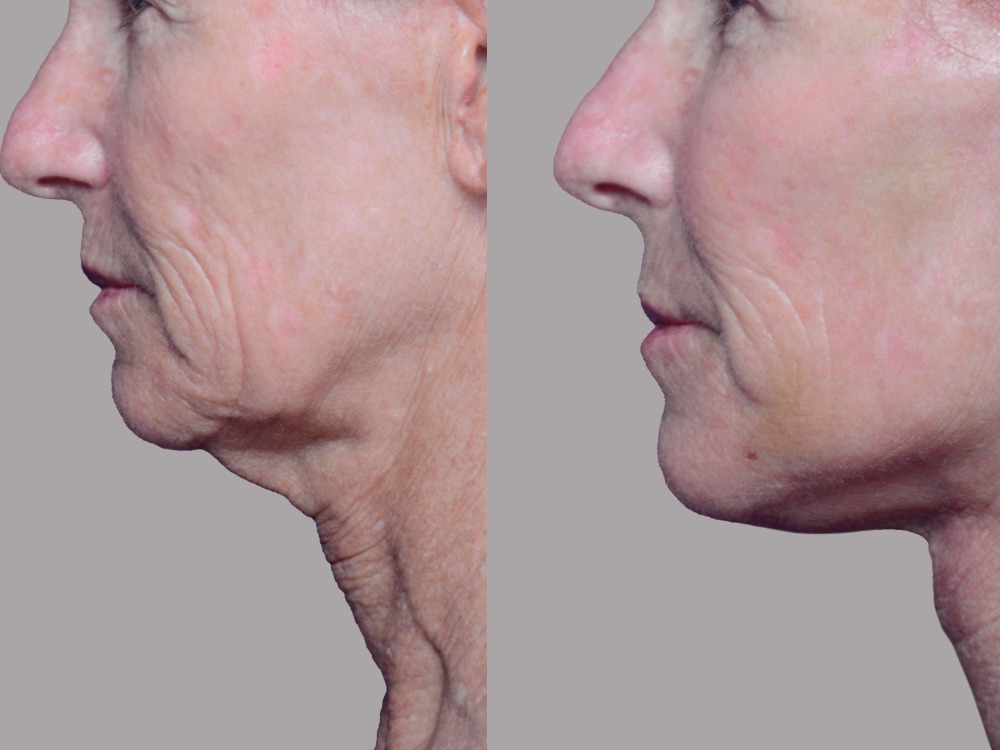
The Innovative Technique that Gives Former Facelift Patients Their Results Back
Currently, nonsurgical interventions such as dermal fillers like Juvéderm, Restylane and Radiesse, and neurotoxins like Botox Cosmetic and Xeomin get most of the headlines; the gold standard and most comprehensive and harmonious facial rejuvenation results are still provided through surgical means. Facelift procedures continue to have a remarkably high satisfaction rate with patients. As we humans continue to live longer, and as we continue to value our sense of self-image as we age, it is no surprise that the number of facelifts performed in the United States continues to grow at a considerable pace. At Ocean Drive Plastic Surgery, the practice of Vero Beach, FL plastic surgeon Alan Durkin, MD and his partner plastic surgeon Jimmy Chim, MD, excellent, natural results are the standard expectation for every procedure undertaken by the board-certified surgeons.
Modern facelifts have evolved from simple skin subtractive procedures, into a comprehensive rejuvenation of the shape, volume, skin, and structure of the aging human face. Today, facelifts are commonly and appropriately associated with all types of laser modalities, volume replacement procedures—like fillers, fat grafting and Renuva—and other forms of collagen induction therapy during the actual procedure.
While facelift procedures provide the most comprehensive results, what about a second facelift? Is it as good as the first facelift?
To illustrate this, a common age people tend to undergo facelifts is 50 years old and over. Not uncommonly, Dr. Durkin can give results that rejuvenate a 55-year-old patient and make him or her resemble themselves in their late 30’s to early 40’s. A 70-year-old patient will look 55 again. Dr. Durkin’s facelift, just like any appropriately performed facelift, provides an aging reset, but it doesn’t completely stop the aging process. “These patients will predictably search out for what is called a ‘secondary facelift’ around their late 60’s or early 70’s,” Dr. Durkin says. “This age group is highly sophisticated in regard to aesthetics, and they very commonly have a baseline positive??”
Is a secondary facelift the same as the first one?
“No, and conventional wisdom will have you believe that your second facelift will not get you as good a result as your first facelift,” says Dr. Durkin. “This sentiment has some truth, as a second facelift is done on an older patient who now has less skin and structural collagen, but also scar tissue from their first facelift. Both factors tend to reduce the effectiveness of a secondary facelift, especially in the neck area.” To counteract this, Dr. Durkin has developed an innovation that can allow for neck elevation similar in secondary facelifts that is nearly identical to the first facelift elevation. Recently presented at the national meeting of the American Society of Aesthetic Plastic Surgeons (ASAPS), this novel technique can re-elevate the neck in a fashion like a first facelift.
An Innovative Mesh Technique That Gives Added Facelift Support
Think of this biological mesh as a natural “internal bra” for the lower face. “We know the internal bra technique to be a game-changer in breast surgery for patients who want a lifted look with anti-gravity support,” Dr. Durkin explains. “That added reinforcement comes from a biocompatible mesh that supports the patient’s aging tissue over time, preventing descent of breast implants as you age.” Dr. Durkin has been a researcher and early adopter of biologic mesh in breast augmentation revisions for over a decade, and he brings this internal-bra concept to patients undergoing secondary facelift procedures.
What It Does
In his more complex secondary facelift cases, Dr. Durkin has employed the use of a biological surgical mesh to help to fortify the tension created with the patient’s own tissue. “When soft tissue support is needed, this biological mesh acts like scaffolding or a foundation,” he explains. “It’s also customizable as I’m able to tighten it based on what the person needs.” During a facelift, the skin and the deeper SMAS layer (the layer of tissue that supports the overlying skin) are lifted, tightened and repositioned to give a more youthful look. “In certain candidates, like those who’ve had a previous facelift, the mesh not only helps create the lift, but it also works long after it’s incorporated into the tissue because it stimulates collagen production where it is placed, so the body then creates its own scaffolding as time goes on.”

What It’s Made Of
“I use Meso BioMatrix surgical mesh,” Dr. Durkin shares. “It’s thin, pliable and durable and it helps maintain that ideal contour in the lower face and neck.” The FDA-approved material is an acellular matrix commonly used in breast reconstruction cases, and the results are just as transformative for his secondary facelift patients.
What You Can Expect
For his satisfied patients, like the tennis pro who spent years in the sun, or the 83-year-old grandmother who wants a facelift revision to keep feeling like herself, the outcome is a more youthful contour and long-lasting results. “What we’re doing is turning a negative into a positive,” explains the surgeon. “With the prominent platysma bands in the neck, the reason why they’re prominent is because they have a lot of scar collagen in them. Instead of just excising that scar, we are using it as a force for youth by using it as an anchor for the mesh, and then using the mesh to cover and reposition those bands so they are not seen.”
Find a Doctor
Find a NewBeauty “Top Beauty Doctor” Near you